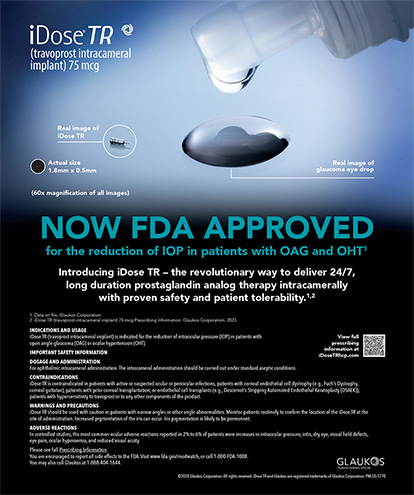Having just “enjoyed” my first week of electronic medical records (EMRs), my patience with the government's intervention in health care and the practice of medicine has admittedly worn thin. I have hired three scribes and a computer technician, my productivity has decreased, and most importantly, the care provided to my patients has diminished.
Pop quiz: EMRs are
A. A benevolent attempt by the US government to help doctors and patients.
B. A federal work program to increase employment through medical practices' hiring of staff not related to patients' care.
C. An attempt by the US government to monitor physicians that carries the possibility of punishment.
The answer is probably all of the above to some extent. I see the potential advantages of EMRs, and although their adoption is transiently painful, I can accept the intrusion. What I cannot accept so easily is the government's intrusion into medical education, the core of ophthalmology. Education is indispensable, directly related to improving the care of patients, and often expensive. Contrary to the current climate, all we physicians need to know is not contained in the FDA-approved monograph that comes with every drug and device. Off-label indications are often the standard of care. In fact, many of the best things we do for patients are off label but now cannot be discussed in a promotional talk. As part of my personal crusade to support off-label education, I will make three comments, although I could offer many more.
First, topical nonsteroidal antiinflammatory drugs are used to prevent cystoid macular edema, not to reduce cell and flare, which is the primary FDA-approved indication. In addition, based on the peer-reviewed literature, I instruct my patients to start using nonsteroidal antiinflammatory drugs 3 days preoperatively and to continue them for a month rather than the 2 weeks recommended in the monograph that I am required to recite at industrysupported events.
Second, we most often prescribe topical antibiotics to prevent infections after surgery and to treat bacterial corneal ulcers, not to treat conjunctivitis, their only FDA-approved indication.
Third, refractive lens exchange is an excellent option for treating presbyopes with high hyperopia.
In this edition of Cataract & Refractive Surgery Today, two surgeons describe the educational opportunities they value most, and leading ophthalmic educators discuss the impact of compliance rules on learning. Education that benefits our patients goes well beyond our personal training. Our staffs are an extension of our practices, so their learning is tremendously important, as highlighted in this issue.
On my first day of medical school, a pharmaceutical company representative stood before my class and offered each of us a free stethoscope as a token of a mutual commitment to patients, as long as my peers' and my values were not compromised (in which case we could refuse the gift). No one refused, no values were compromised, and one of my classmates memorably asked if he could have two stethoscopes (he is now an ophthalmologist). I am certain this practice has long since been discontinued, which is fine with me, but when I must refuse education because it has not been sanctioned by the FDA, we have crossed the line.


